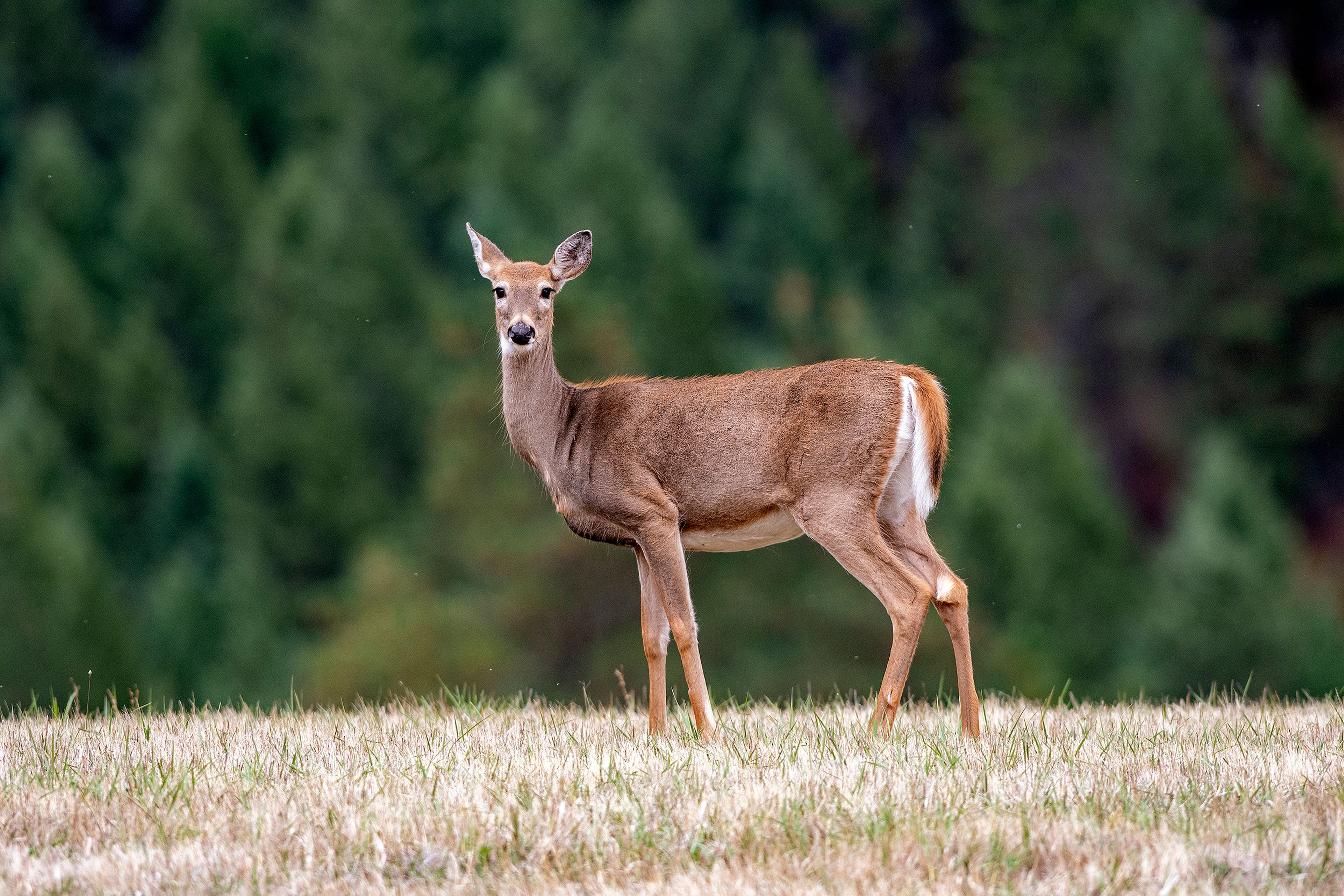Disease kills 2,000 deer along lower Blues
Seasonal infection EHD burned through NE Oregon whitetail deer population
PENDLETON — An insect-spread virus decimated the whitetail deer population across much of Umatilla County.
The Oregon Department of Fish and Wildlife reported epizootic hemorrhagic disease killed off approximately 2,000 whitetail deer in the lower elevations of the Blue Mountains, from the Washington border north of Milton-Freewater to the Pilot Rock area south of Pendleton. Greg Rimbach, wildlife biologist for the department, said the estimate for the whitetail deer population for that swath was 3,300. The disease, then, killed 60 percent of that population.
The office in Pendleton takes calls each fall from landowners who report finding a dead deer or two, Rimbach said, but this past August was different.
“They were finding 10, 12, 15 dead deer,” he said.
Rimbach and a fellow wildlife biologist hit the field to see what was happening. The flat land behind Wildhorse Resort & Casino several miles east of Pendleton, for example, Rimbach said, usually is home for about 150 whitetail deer.
“Went out there and counted none,” he said.
They also collected tissue samples of a dead deer for testing and sent the material to the ODFW Health and Population Lab, Corvallis. The results came back positive for epizootic hemorrhagic disease as the cause of death.
A subsequent survey in December took samples from eight whitetail deer carcasses across the county for testing. Every sample, Rimbach said, was positive for EHD, leading to an estimated population loss of 2,000 deer due to the disease.
Epizootic hemorrhagic disease is a seasonal disease that can occur during the late summer and fall months, according to ODFW. The disease is known to have existed since the 1890s and is found in most of the United States with the exception of the extreme northeast and the northwest. It is different from adenovirus hemorrhagic disease, which can occur year-round. Biting midges, also known as “no-see-ums” or gnats, transmit the disease. The tiny insects can breed and live in small pools of warm, stagnant water, according to a news release from the state wildlife department, “even in pools as small as a hoof print filled with water.”
Freezing weather kills the larvae, Rimbach said, and colder temperatures in November brought an end to the outbreak. Rimbach also doubted anyone would have much luck now finding more of the dead deer. Coyotes and other wildlife would have consumed what they could of carcasses while they decomposed. Maybe all anyone would find now, he said, is a leg bone.
The disease did not seem to touch the mule deer in the area, Rimbach said, nor the whitetail deer that live at higher elevations, such as around Tollgate or in the Ukiah area.
“I don’t think they were affected at all,” he said.
But 80 percent of whitetail deer live in lower elevations, right where the disease spread, he said. They are susceptible to hemorrhagic diseases, he said, and once an outbreak begins, there is nothing to do but let it run its course.
Deer loses to the disease are not uncommon in Oregon, according to ODFW, and as significant as this die-off is, it should not have long-term effects on the size of the deer population.
Still, the state wildlife department is determining whether to reduce the number of deer tags or cancel hunts in the Walla Walla, Mount Emily and Ukiah hunting units. The state agency reported it will inform hunters of any changes by April 15 so they have time to change their controlled hunt application choices before the May 15 deadline.
Rimbach said given the size of the die-off, cutting some antlerless hunts — particularity agriculture-related hunts — makes sense.
Ag hunts help curtail deer populations that damage crops. The department might issue only a certain number of tags for such a hunt, he said, but in this situation, he said, “There’s really no deer to be had.”
Not holding such hunts also would allow the whitetail population to recover all the sooner, he added.
But he said he and other staff would like to see the anterless youth hunt continue. He said that hunt is worth keeping because it’s such a good opportunity for youth to get involved in hunting.
Meat from game with EHD is consumable, and the disease is not transmittable to humans, according to the wildlife department, but experts recommend thoroughly cooking any meat from animals from an infected area. Well-cooked venison, Rimbach said, would be just fine.
“I would eat it,” he said.









